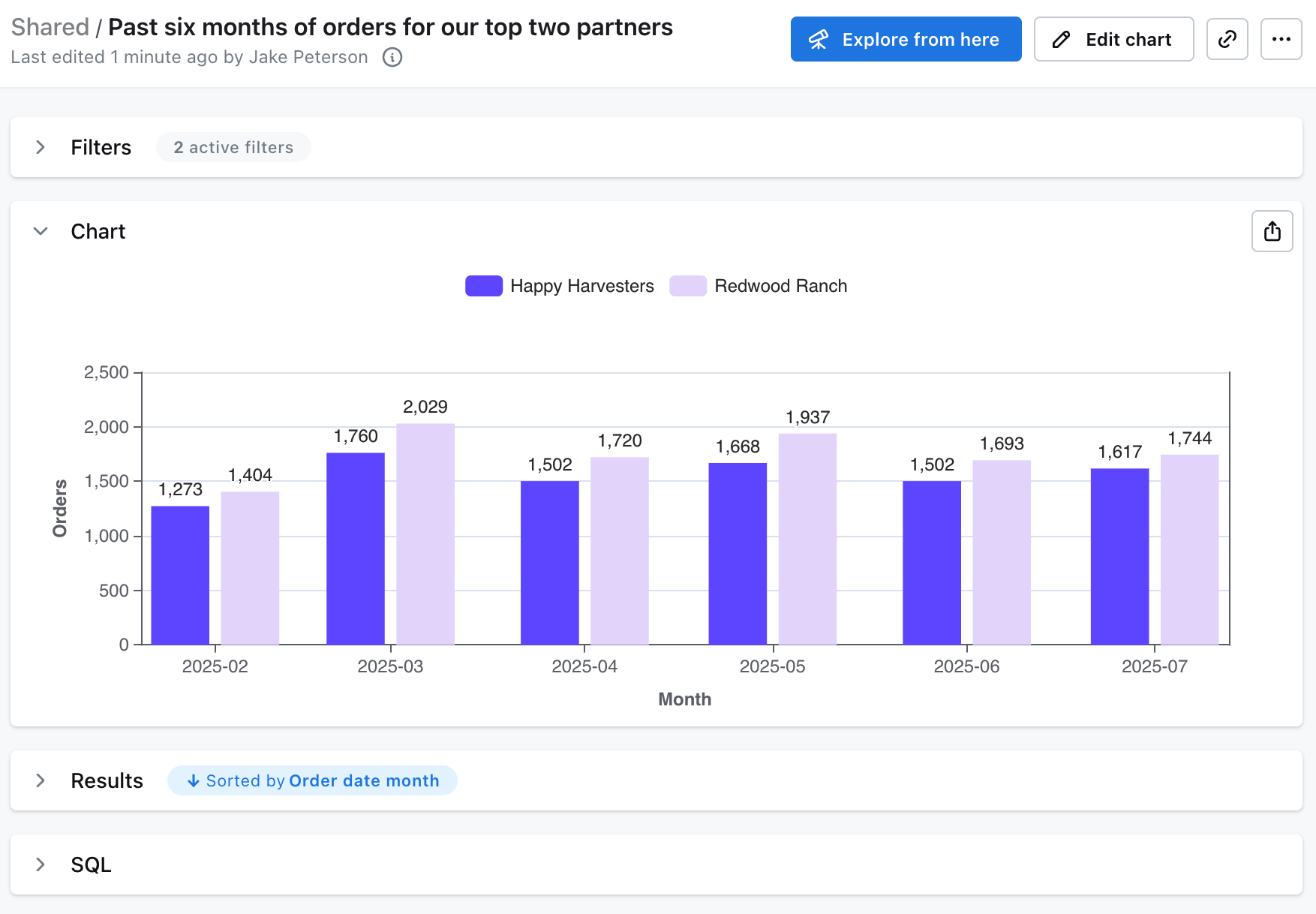An intro to tables and the explore page
To start a new query, click on[+] New —> Query from tables, then select the table that you want to explore.
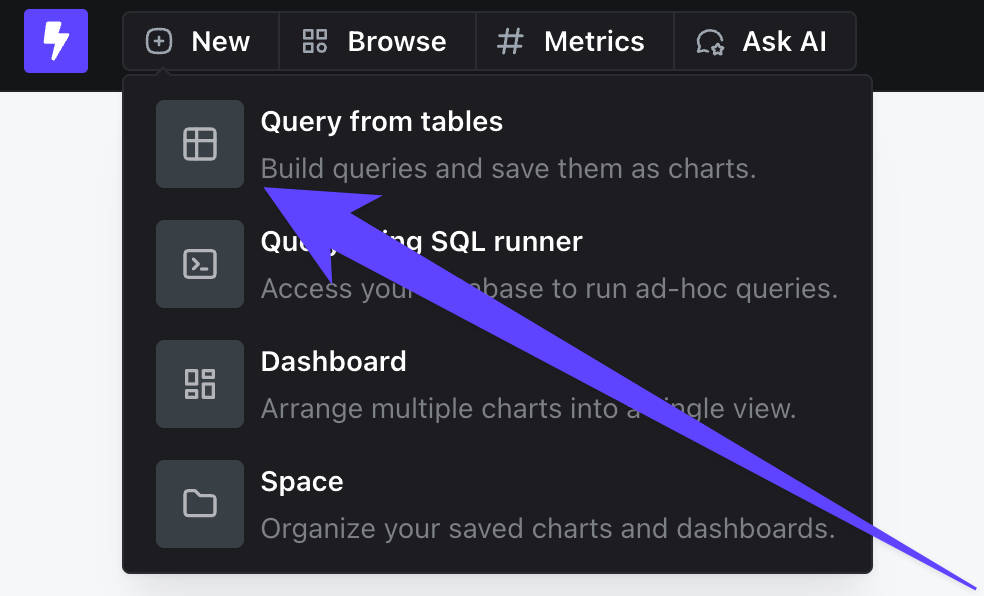
- Metrics and Dimensions that are available on the table you selected
- Filters, which lets you restrict the data in your query
- Chart, where you’ll visualize your query results
- Results, the raw data returned from your database
- SQL, shows the generated SQL that produced the results

Choose a table
Click on[+] New —> Query from tables, then select the table that you want to explore.

Select your fields
To run a query:- Select a metric to calculate
- Select one or more dimensions to split the metric into groups
- Hit Run query in the top right
Order count metric, the Order month dimension, and the Partner name dimension, to split by partner.
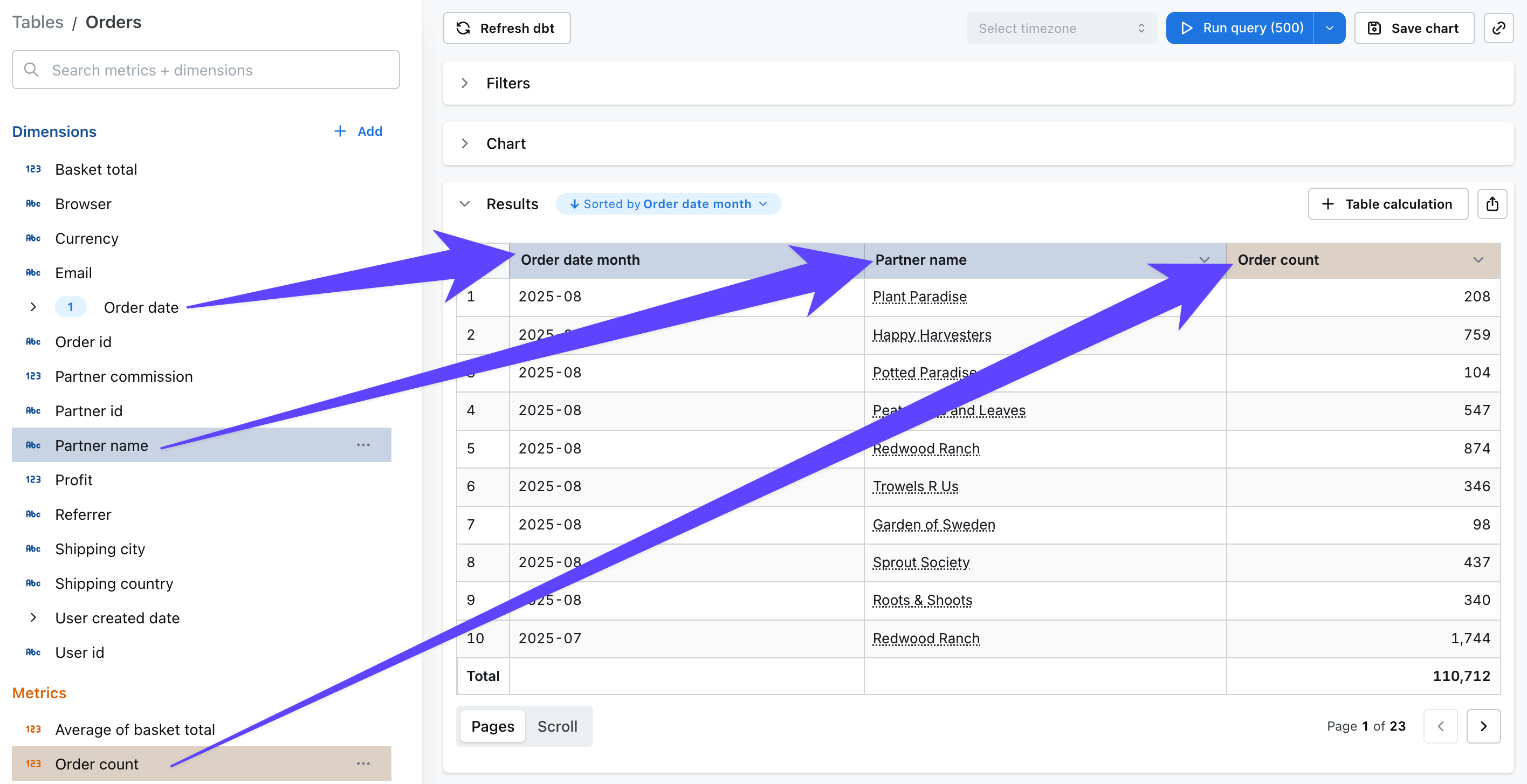
Filter results
You can add filters in a few different ways:- Click
+ Add filterin the Filters section. - Open the column header menu in the Results table, then
Filter by [field name]. - Click the filter icon that appears when you hover over Dimensions and Metrics.
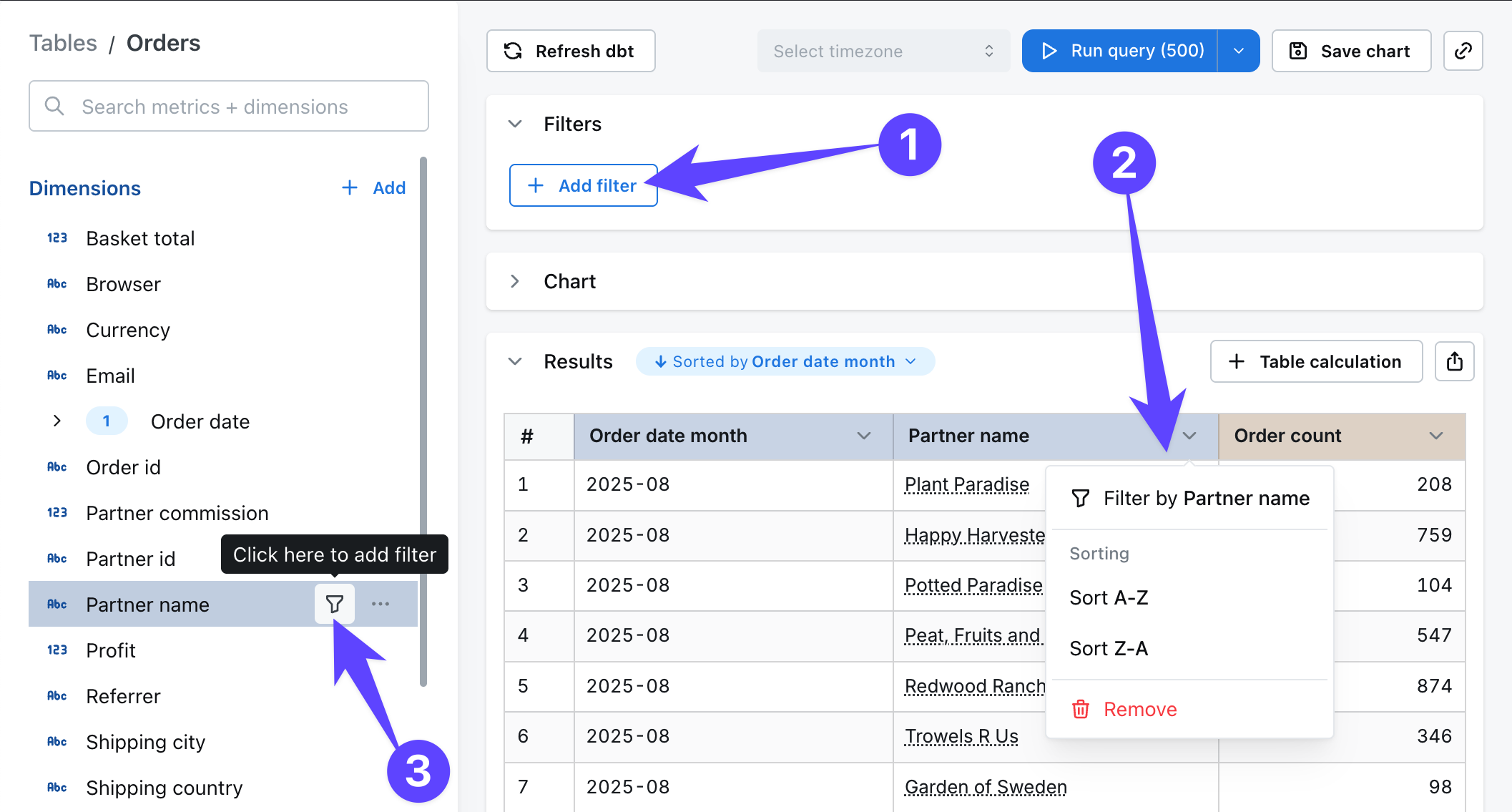
Sort results
Click on the arrow in the table header for the field you want to sort by.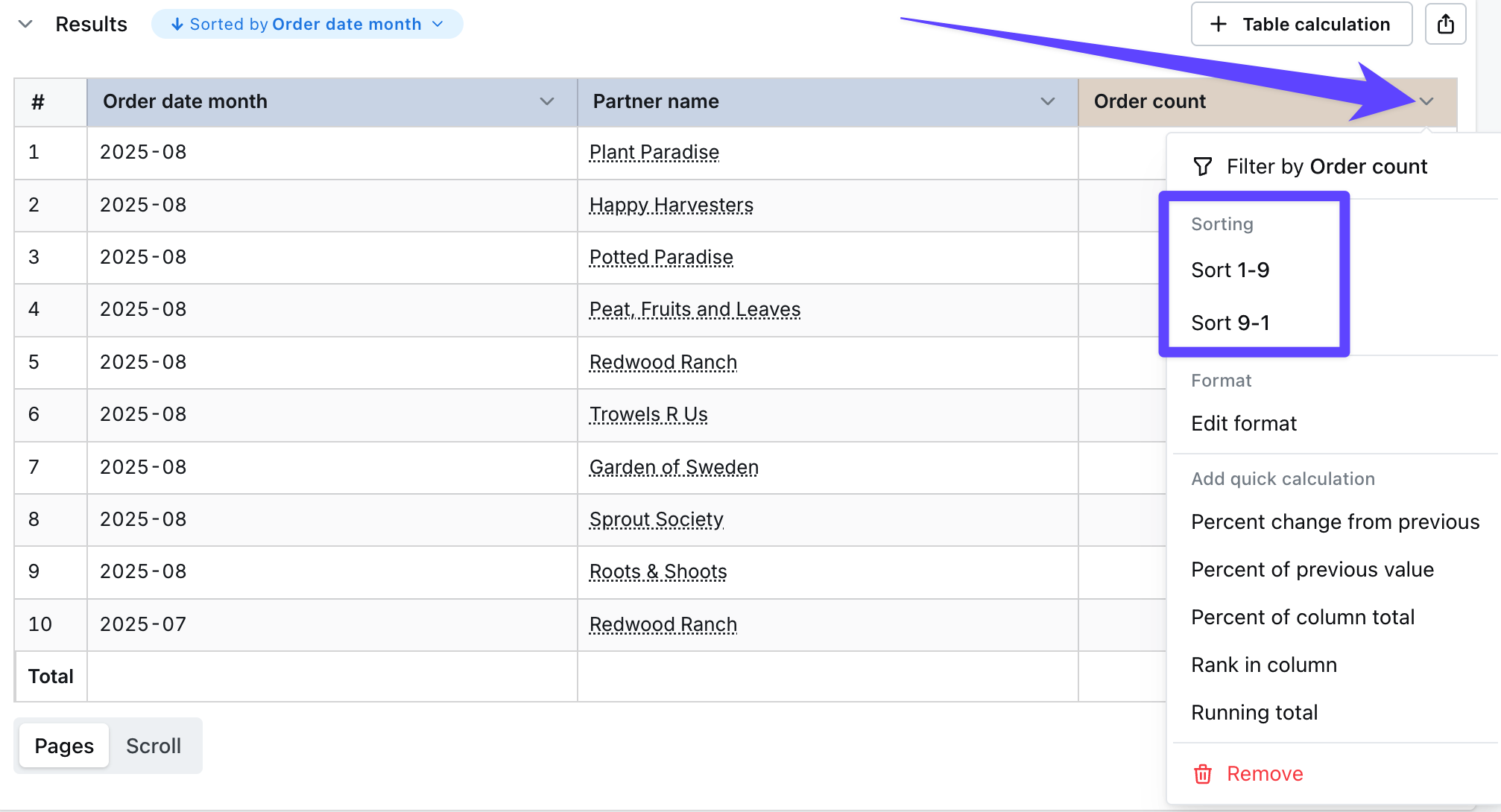
+ Add sort.

- When you add a sort by clicking on a column header, that sort will overwrite any previous rules.
- After using the sort menu to sort by multiple columns, you can drag-and-drop columns to rearrange the order.
- Remove a sort by clicking the
Xto the right. - Change the order of a column’s sort using the toggle next to the field name in the sort menu.
Sorting NULL values
You can specify whether NULL values should appear first, last, or use your database’s default sorting behavior.
- Open the sort menu by clicking the blue pill that displays the current sort
- For each sort field, use the NULL sorting control to select your preference:
- Nulls first - NULL values appear at the top of the results
- Nulls last - NULL values appear at the bottom of the results
- Default - Uses your database’s default NULL sorting behavior
NULLS FIRST or NULLS LAST clauses in the ORDER BY statement.
Build a chart
Once the query runs, your data will appear in the results table. You can then open the Chart section and choose a chart type. You can read more about all the chart types and configurations here.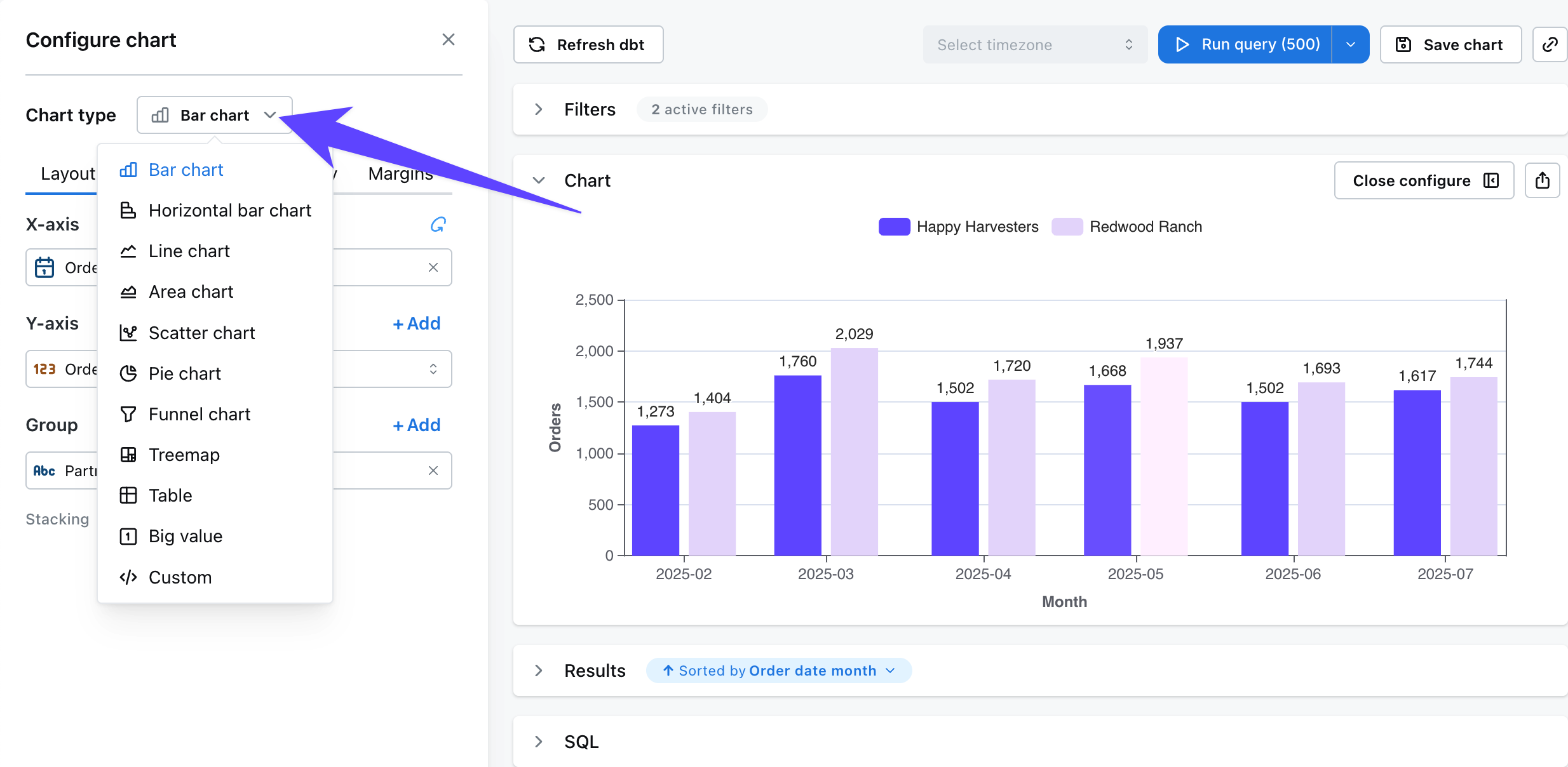
Save your chart
Saved Charts allow you to save a specific chart or table so you can share, add it to a dashboard, or revisit it again in future. When you open a saved chart, it will always update to display the latest data in your database since it will re-run the query each time you open it.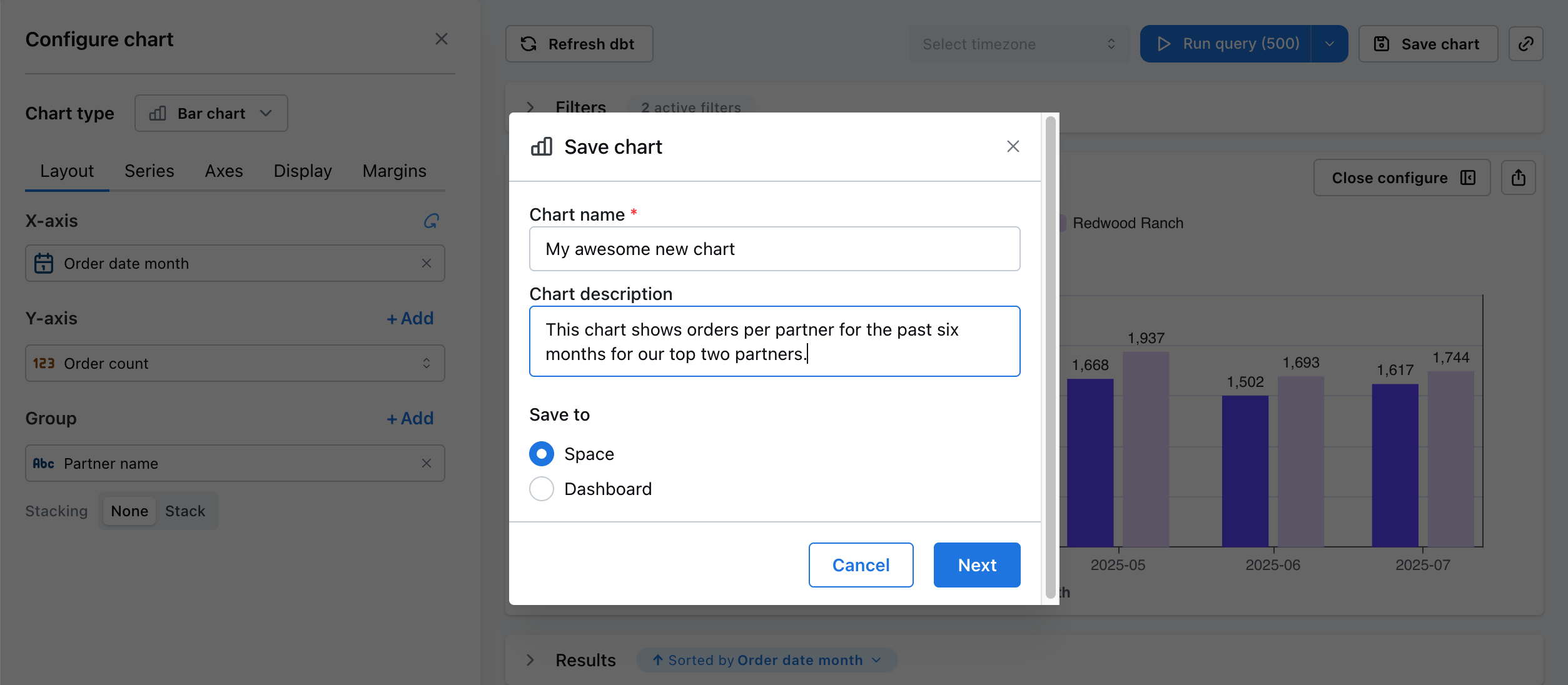
Save chart button at the top of the page, then give your chart a useful name and description. You’ll have the option to save the chart to a Dashboard or a Space.
Once you save a chart, it unlocks these useful features:
Saving to a Dashboard
The majority of charts in Lightdash are saved directly to a dashboard. This option is better if your chart is only ever going to be used on one dashboard anyways. When you save a chart to a dashboard it doesn’t clutter up your Spaces with long lists of charts that only make sense in the context of a specific dashboard. Saving a chart to a Dashboard means it only lives within that single dashboard. If you want to reuse it you’ll need to move it to a space or clickExplore from here and create a new version of the chart.
Saving to a Space
Saving a chart to a Space means it can be shared individually and reused across multiple dashboards. This option is also the only way to pin a single chart to your project home page. You’ll get a nice Saved chart view that you can use to share with others.